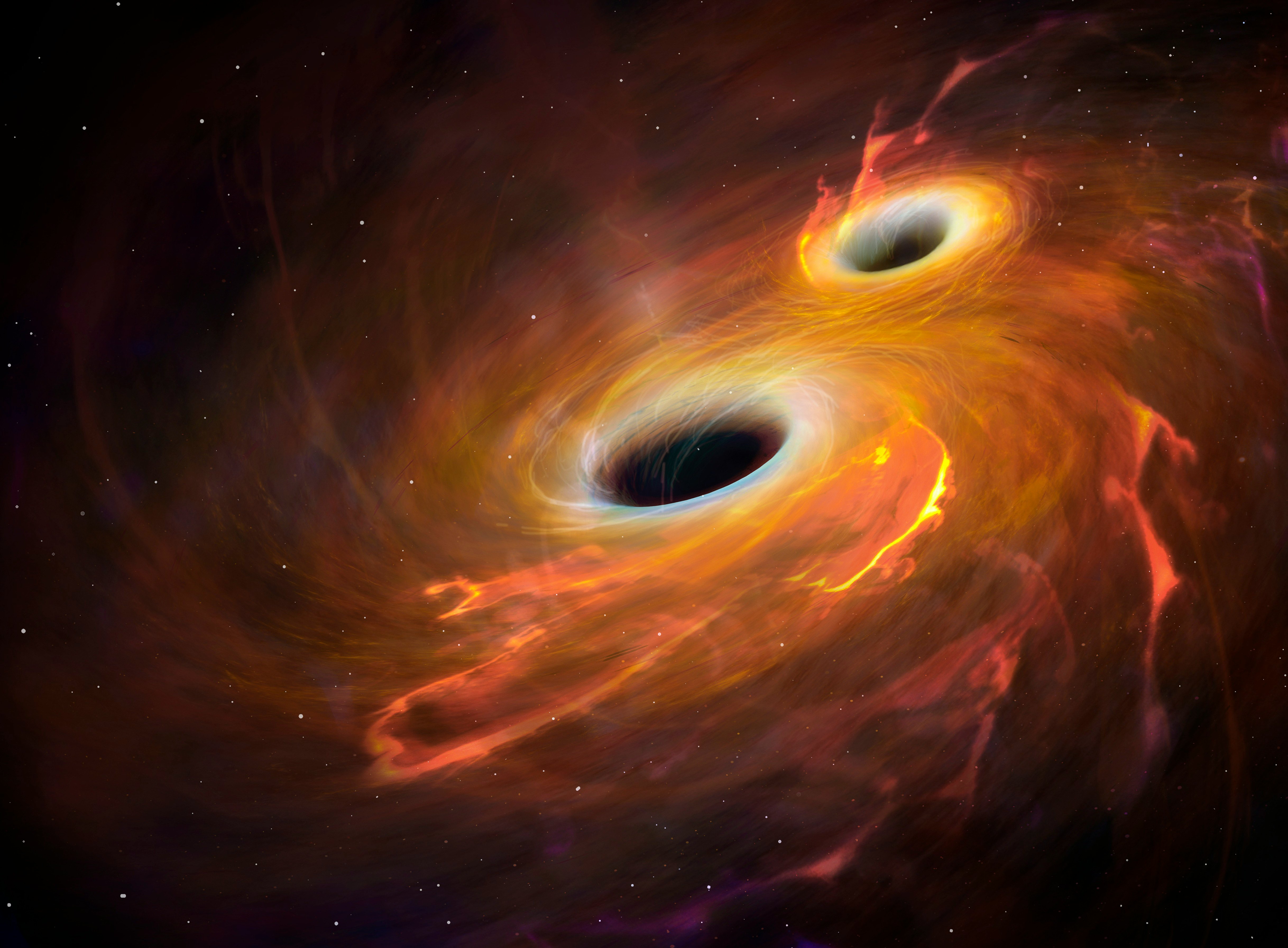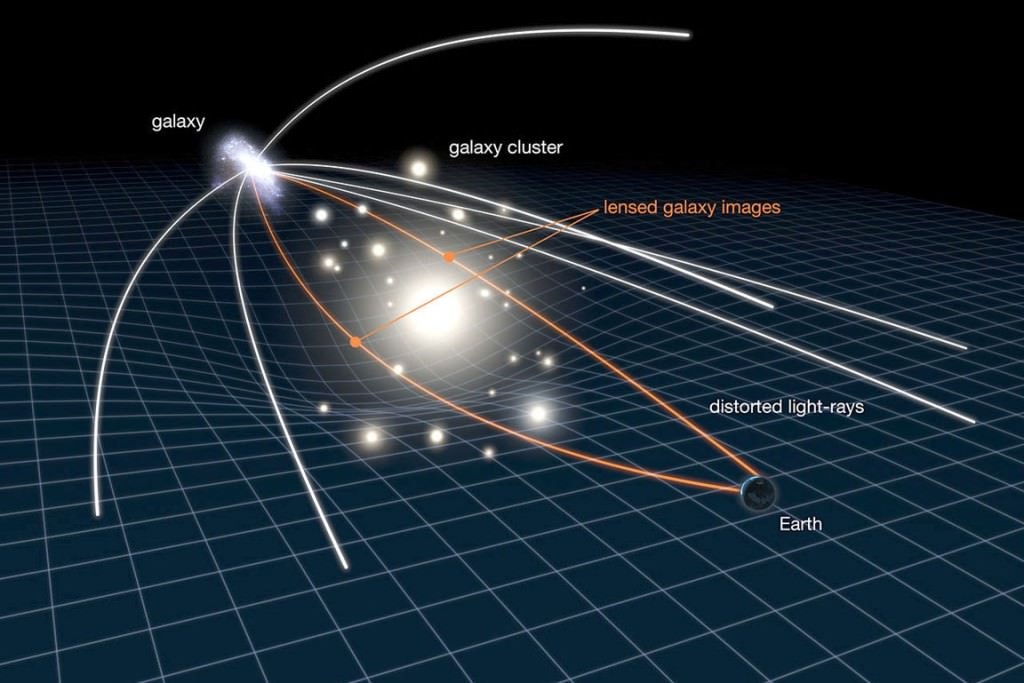
The study of black holes has advanced immensely in the past few years. In 2015, the first gravitational waves were observed by scientists at the Laser Interferometer Gravitational-Wave Observatory (LIGO). This finding confirmed what Einstein predicted a century before with General Relativity and offered new insight into black hole mergers. In 2019, scientists with the Event Horizon Telescope (EHT) Collaboration shared the first image of a supermassive black hole (SMBH), which resides at the center of the M87 galaxy.
Earlier this month, the EHT announced that they had also acquired the first image of Sagittarius A*, the black hole at the center of the Milky Way. And just in time for Black Hole Week (May 2 to May 6), a pair of researchers from Columbia University announced a new and potentially easier way to study black holes. In particular, their method could enable the study of black holes smaller than M87* in galaxies more distant than the M87 galaxy.
This new imaging method was developed by Zoltán Haiman (a professor of astronomy at Columbia University) and Jordy Davelaar, a theoretical astrophysicist at Columbia, the Flatiron Institute in New York, and a member of the EHT Collaboration. Their method was outlined in complementary studies that recently appeared in Physical Review Letters and Physical Review D. As they indicate in these papers, their technique combines two techniques — interferometry and gravitational lensing.
The former technique involves using multiple instruments to capture light from distant sources, then combining it to create a composite image. This technique allowed the EHT Collaboration to capture images of the bright rings surrounding M87* and Sagittarius A* (among other objects). In the latter case, the gravitational force of a massive object (such as a black hole or galaxy) is used to magnify and enhance the light of a more distant object.
As Haiman and Davelaar explain, viewing a binary black hole system edge-on as one passes in front of the other, astronomers will be able to use the gravitational force of the closest black holes to magnify the bright disk of the more distant one. However, these observations will also reveal another interesting feature. As two black holes pass in front of each other, said Haiman and Davelaar, there will be a distinctive dip in brightness corresponding to the “shadow” of the more distant black hole.
Depending on how massive the black holes are and how closely their orbits are entwined, these dips can last from a few hours to a few days. The length of the dip can also be used to estimate the size and shape of the shadow cast by the black holes’ event horizon, the point at which nothing can escape its gravitational force (not even light). As Davelaar explained in a recent Columbia News release:
“It took years and a massive effort by dozens of scientists to make that high-resolution image of the M87 black holes. That approach only works for the biggest and closest black holes—the pair at the heart of M87 and potentially our own Milky Way. [W]ith our technique, you measure the brightness of the black holes over time, you don’t need to resolve each object spatially. It should be possible to find this signal in many galaxies.”

As Haiman added, the shadow of a black hole is its most mysterious and informative feature. “That dark spot tells us about the size of the black hole, the shape of the space-time around it, and how matter falls into the black hole near its horizon,” he said. Haiman and Davelaar became interested in this phenomenon after Haiman and a team of colleagues detected a suspected pair of supermassive black holes (“Spikey“) in 2020 at the center of a galaxy that existed during the early Universe.
The discovery occurred when the team was examining data from the Kepler Space Telescope to monitor distant stars for tiny dips in brightness, which is used to confirm the presence of transiting exoplanets. Instead, the Kepler data showed indications that the flaring effect was caused by a pair of transiting black holes that were visible edge-on. The nickname was due to the spikes in brightness triggered by the suspected lensing effect of the black holes as they passed in front of each other.
To learn more about the flare, Haiman enlisted the help of his postdoc (Davelaar) to construct a model for this flaring effect. While the model confirmed the spikes, it also revealed a periodic dip in brightness that they could not explain. After eliminating the possibility that this resulted from errors in the model, they determined that the signal was real and began looking for a physical mechanism that could explain it. Eventually, they realized that each dip closely corresponded to the time it took for the black holes to make transits relative to the observer.
The detection of this shadow could have immense implications for astrophysicists and quantum physicists alike. Astrophysicists have been looking for these shadows as part of an ongoing effort to test General Relativity under the most extreme conditions and environments. These tests could lead to a new understanding of how gravity and quantum forces interact, which would allow physicists to finally resolve how the four fundamental forces of nature work together — electromagnetic, weak nuclear forces, strong nuclear forces, and gravity.
For decades, scientists have understood how three of the forces that govern all matter-energy interactions work. While general relativity describes how gravity (the weakest of the four forces) works on its own, all efforts to find a way to explain it in quantum terms have failed. As a result, a theory of “quantum gravity,” or Theory of Everything (ToE), has eluded even the greatest scientific minds. This includes Einstein and Stephen Hawking, who dedicated the better part of their scientific career to finding one.
In the meantime, Haiman and Davelaar are currently looking for other telescope data to confirm the Kepler observations and verify that “Spikey” really is harboring a pair of merging black holes. If and when their technique is confirmed, it is likely to be applied to the roughly 150 pairs of merging SMBHs that have been observed but are still awaiting confirmation. In the coming years, next-generation telescopes will be coming online which will allow for more opportunities to test this technique.
Examples include the Vera C. Rubin Observatory, a massive telescope in Chile scheduled to open later this year. Once operational, Rubin will conduct the 10-year Legacy Survey of Space and Time (LSST) which will include the observation of more than 100 million SMBHs. By 2030, NASA’s Laser Interferometry Space Antenna, a space-based gravitational wave detector, will also come online and enable even more opportunities to study merging black holes. With so many candidates available for study, scientists shouldn’t have to wait too long for a breakthrough.
“Even if only a tiny fraction of these black hole binaries have the right conditions to measure our proposed effect, we could find many of these black hole dips,” said Davelaar.
Further Reading: Columbia News
This article was originally published on Universe Today by Matt Williams. Read the original article here.







